Papers by Leonid Aranovich
EGU General Assembly Conference Abstracts, Apr 1, 2019
European geosciences union general assembly, 2019
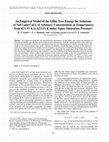
Doklady Earth Sciences, 2018
An empirical model for the concentration dependence of the Gibbs free energy for solutions of chl... more An empirical model for the concentration dependence of the Gibbs free energy for solutions of chlorides of alkaline and alkaline earth metals in water is proposed. A simple analytical form of the Gibbs free energy makes it possible to obtain the equations of state for salt solutions that are equally accurate in the entire range of salt concentrations, from dilute solutions to solubility limits. The high accuracy of the thermodynamic description of solutions of high and intermediate concentration is ensured by the presence in the equation for the Gibbs free energy of two terms related to the Margules decomposition of the Gibbs free energy. Our form of the Gibbs free energy also contains a term that reproduces the thermodynamic behavior of solutions of electrolytes, which ensures high accuracy of the proposed model at low salt concentrations in the solution. Using the model, the equations of state for aqueous solutions of NaCl and CaCl 2 at water vapor pressure in the temperature ranges of 423.15 K-573.15 K and 423.15 K-623.15 K were obtained, which corresponds to the parameters of ore-bearing solutions participating in the formation of low-temperature hydrothermal ore deposits.
Springer Geochemistry, 2018
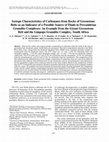
Doklady Earth Sciences, 2020
Abstract Data on the carbon and oxygen isotopic composition of carbonates from the rocks of the G... more Abstract Data on the carbon and oxygen isotopic composition of carbonates from the rocks of the Giyani greenstone belt, Kaapvaal craton, South Africa are presented. This belt is immediately adjacent to the Hout River Shear Zone, along which the Southern Marginal Zone (SMZ) of the Limpopo granulite complex is overthrusted onto the Kaapvaal craton. The δ 13 C values are –2.1 and –2.2‰ for carbonates from two metapelite samples, –5.1‰ for a meta ultrabasite sample, and –7.1 and –7.7‰ for two metabasite samples, respectively. The δ 18 О values are 17.1 and 17.5‰ for carbonates from the metapelites, 14.3‰ for carbonates from the metaultrabasite, and 12.9 and 13.0‰ for carbonates from the metabasites. The comparison of the data obtained to the published data on the isotopic composition of carbonates from the rocks of the different greenstone belts indicates both hydrothermal (in the metabasites and the metaultrabasite) and sedimentary (in the metapelites) origins of the carbonate material in the rocks studied. Based on the comparison of these data to δ 13 C of magnesite that formed in ultrabasic granulites during the interaction of the Limpopo complex with the craton, the graphite and fluid inclusions in leucocratic garnet-bearing granitoids that transported fluids, and the carbon isotopic composition of graphite from metapelites of the SMZ, it is concluded that the carbon source was located outside the SMZ and represented a heterogeneous carbonate-bearing lithologies. It could be carbonate-bearing volcanogenic–sedimentary sequences of the greenstone belts of the Kaapvaal craton, which underwent prograde metamorphism during the interaction with the SMZ granulites.

Chemical Geology, 2020
Abstract New experimental data on interaction of basaltic melt with hydrogen at high temperature ... more Abstract New experimental data on interaction of basaltic melt with hydrogen at high temperature (1100–1250 °C) and hydrogen pressure (10–100 MPa) have been obtained to gain insight into the possible role of hydrogen in the processes occurring in basaltic melts in the earth's crust under reducing conditions (f(O2) = 10−13–10−15). The experiments were carried out in a unique in house built internally heated pressure vessel (IHPV). This apparatus is equipped with an internal device, which allows long-term experiments under hydrogen pressure at high temperatures without losing hydrogen. Two types of experiments were carried out: 1 - kinetic experiments with isobaric quenching, 2 - crystallization experiments with subsequent isobaric quenching. It was found that, despite the high reducing potential of the H2 - basaltic melt system, the hydrogen oxidation reactions and the Fe oxides reduction in the melt are not complete. Initially homogeneous basaltic melts become heterogeneous. H2O is formed in the fluid phase (initially consisted of pure hydrogen); H2O (0.34–0.9 wt%) also dissolves in the basaltic melts, and small metal blobs with an emulsion-like texture are formed in the melts at temperature significantly lower than the melting temperature of the metal phase (Fe). The texture and dimensions of the metal segregations resemble those reported from natural magmatic rocks. Some new features of the crystallization process of basaltic melt under very reducing conditions are also discussed. The assemblage of subliquidus minerals (olivine + clinopyroxene + plagioclase) formed in the crystallization experiment at T = 1100 °C, P(H2) = 10 MPa with run duration 2 h, and their chemical compositions match closely those described in natural lavas (e.g. Kamchatka volcanoes). This result can be considered as an experimental confirmation of the participation of hydrogen in the magmatic process, which also corroborates with the composition of volcanic gases.
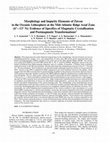
Petrology, 2017
⎯The paper presents newly obtained original data on the morphology, internal structure (as seen i... more ⎯The paper presents newly obtained original data on the morphology, internal structure (as seen in cathodoluminescence images, CL), and composition of more than 400 zircon grains separated from gabbroids and plagiogranites (OPG) sampled at the axial zone of the Mid-Atlantic Ridge (MAR). The zircons were analyzed for REE by LA-ICP-MS and for Hf, U, Th, Y, and P by EPMA. Magmatic zircon in the gabbroids crystallized from differentiating magmatic melt in a number of episodes, as follows from systematic rimward increase in the Hf concentration, and also often from the simultaneous increase in the (U + Th) and (Y + P) concentrations. These tendencies are also discernible (although much less clearly) in zircons from the OPG. Zircon in the OPG is depleted in REE compared to the least modified zircons in the gabbro, which suggests that the OPG were derived via partial melting of gabbro in the presence of seawater-derived concentrated aqueous salt fluid. Another reason for the REE depletion might be simultaneous crystallization of zircon and apatite. The CL-dark sectors, which are found in practically all of the magmatic zircon grains, have Y/P (a.p.f.u.) 1 which most likely resulted from OH accommodation in the zircon structure, a fact suggesting that the OPG parental melt contained water. High-temperature hydrothermal processes induced partial to complete recrystallization of zircon (via dissolution-reprecepitation), a process that was associated with ductile and brittle deformations of the zircon-hosting rocks. The morphology of the hydrothermal zircons varies depending on pH and silica activity in the fluid from weakly corroded subhedral crystals with typical vermicular microtopography of the crystal faces to completely modified grains of colloform structure. Geochemically, the earlier hydrothermal transformations of the zircons resulted in their enrichment in La and other LREE, except only Ce, whose concentration, conversely, decreases compared to that of the unmodified magmatic zircons. The hydrothermal zircon displays a reduced Ce anomaly and its most altered domains typically host minute inclusions of xenotime, U and Th oxides and silicates, and occasionally also baddeleyite, which suggests that the hydrothermal fluid was reduced and highly alkaline. These features were acquired by the seawater-derived fluid when it circulated within the axial MAR zone area due to phase separation in the H 2 O-NaCl system and particularly as a result of fluid interaction with the abyssal peridotites of oceanic core complexes. Our data demonstrate that zircon is a sensitive indicator of tectonic and physicochemical processes in the oceanic crust.
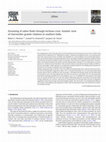
Lithos, 2019
The complementary roles of granites and rocks of the granulite facies have long been a key issue ... more The complementary roles of granites and rocks of the granulite facies have long been a key issue in models of the evolution of the continental crust. "Dehydration melting", or fluid-absent melting of a lower crust containing H 2 O only in the small amounts present in biotite and amphibole, has raised problems of excessively high temperatures and restricted amounts of granite production, factors seemingly incapable of explaining voluminous bodies of granite like the Archean Closepet Granite of South India. The existence of incipient granulite-facies metamorphism (charnockite formation) and closely associated migmatization (melting) in 2.5 Ga-old gneisses in a quarry exposure in southern India and elsewhere, with structural, chemical and mineral-inclusion evidence of fluid action, has encouraged a wetter approach, in consideration of aqueous fluids for rock melting which maintain sufficiently low H 2 O activity for granulite-facies metamorphism. Existing experimental data at elevated T and P are sufficient to demonstrate that, at mid-crust pressures of 0.5-0.6 GPa and metamorphic temperatures above 700°C, ascending immiscible CO 2-rich and concentrated alkali chloride aqueous fluids in equilibrium with charnockitic (orthopyroxene-bearing) gneiss will inevitably begin to melt granitic rocks. The experimental data show that H 2 O activity is much higher (0.5-0.6) than previously portrayed for beginning granulite facies metamorphism (0.15-0.3). Possibilities for metasomatism of the deep crust are greatly enhanced over the ultra-dry models traditionally espoused. Streaming of ultrasaline fluids through continental crust could be a mechanism for the generation of the discrete mid-crust layer of migmatites suggested to characterize younger tectonometamorphic regions. The action of CO 2-rich and hypersaline fluids in Late Archean metamorphism and magmatism could record the beginning of large-scale subduction of volatilerich surficial materials.
Complete experimental data set on quartz solubility in Na2CO3 solutions at high temperature and p... more Complete experimental data set on quartz solubility in Na2CO3 solutions at high temperature and pressure
The file contains details of the runs made to constrain quartz solubility in the sodium carbonate... more The file contains details of the runs made to constrain quartz solubility in the sodium carbonate solutions

The occurrence of mafic enclaves in granitic plutons is a very common feature, particularly in th... more The occurrence of mafic enclaves in granitic plutons is a very common feature, particularly in the late-to post-collision granites. Origin of the enclaves is conventionally ascribed to the magma mingling processes, with the mafic component being derived from an "enriched" mantle source. Here we report geochemical and petrological data on the late-Miocene granitoid stocks and laccolites of the Caucasian Spring Waters region (CSW), which indicate principal involvement of contamination by (meta)-sedimentary carbonates in the origin of mafic nodules. The stocks and laccolites are composed of amphibole-bearing (Amph) granite, granosyenite, syenite and leucogranite varieties. Mafic nodules are rather abundant in granosyenite and syenite, and almost entirely absent in Amph-and leucogranite. All granitoids except for the leucogranites, which are believed to represent late differentiates of the Amph-granites not contaminated by the carbonates, are enriched in Ba and Sr (1227-1766 and 899-1143 ppm, correspondingly). 87Sr/86Sr ratio in the granitoids, recalculated to the intrusion age (8.3 Myr), falls in a narrow range from 0.7083-0.7086, while epsilon Nd(T) varies from-4.2 to-2.1. The epsilon Nd(T) values point to the crustal precursor for the granitoid melts, while the nearly constant 87Sr/86Sr ratio indicates derivation of all granitoid bodies from the same magma reservoir. Mafic nodules in granosyenite and syenite consist of fluorine-rich phlogopite (Phl, up to 5 wt.% F) + clinopyroxene (Cpx) + subordinate plagioclase (Pl, An14-16) + minor carbonate (Carb, 0.2-0.4 wt.% SrO) and apatite. Rare, up to 100 micron sized Sr-rich (up to 2 wt.% SrO) barite (Brt) grains have been identified in the nodules. Stable isotope composition of both Carb (delta 18O = +18.8 per mille, delta 13C =-13.4 per mille) and Brt (delta 34S = +13.5 per mille) indicate (meta)-sedimentary origin of the carbonate precursor rock. Jurassic dolomite-rich evaporates with the required Srand S-isotope signature are indeed present in the crustal section of the CSW. A schematic mafic nodule-producing reaction can be written as: Dolomite + Felsic Melt = Phl + Cpx + Carb + CO2 (1). The pressure (P)-temperature (T) parameters of the nodules' formation have been estimated based on the composition of coexisting Phl, Cpx and Pl using Berman and Aranovich (1996) systematic with the correction for the F-content in the biotite solid solution: P = 1.5 kbar; T = 800oC. Model melt calculations to reproduce early Pl phenocrysts (An14-16) showed that the reacting melt must have been water under-saturated at these P-T conditions (3.5 wt.% H2O). The amount of Dolomite required to produce granosyenite and syenite with the measured geochemical features, has been estimated with a mixing model of Dubinina and Lakshtanov (1997) at about 17 wt.% of the felsic melt. Mixing had occured within the mid-crustal magma chamber prior to intrusion to the present-day upper-crustal levels.
Precambrian Research, 1998
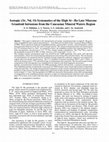
Petrology, 2010
This paper is dedicated to the interpretation of isotope-geochemical data on high Sr-Ba grani toi... more This paper is dedicated to the interpretation of isotope-geochemical data on high Sr-Ba grani toids exemplified by their typical representatives-Late Miocene laccoliths of the Caucasian Mineral Waters (CMW). These massifs are made up of amphibole granites, granosyenites, syenites, and leucogranites, which show particular behavior of Sr, Nd, and O isotope systems. The syenites and granosyenites are characterized by δ 18 O variations from 8 to 10‰. As compared to them, the amphibole granites have lowered (up to 7‰), while leucogranites, elevated (up to 12.5-13.7‰) oxygen isotope compositions. The (87 Sr/ 86 Sr) 8.3 ratio in the granitoids accounts for 0.7083-0.7086, whereas ε Nd (T) varies from-4.2 to-2.1. The complex isotope-geochemical study was carried on the CMW granitoids, host rocks, and wall rock metasomatites, which were formed during emplacement and cooling of the intrusive bodies. The mechanism of contamination of a granitoid melt by evaporite bearing magnesian carbonate sequences was proposed to explain observed isotope characteristics. The P T conditions of granite formation (800°C and 1.5 kbar), as well as the fraction (up to 17%) and inferred age of contaminant were estimated. The elevated oxygen isotope composition of the leucogranites was considered to be related to the fluid magmatic interaction. Isotopic reconstructions showed that all CMW granitoids could be derived from a common parental melt. The amphibole granites occupying the central part of CMW structure most closely approximate composition of the parental melt. The isotope and geochemical signatures of the syenites and granosyenites located at the periphery of the structure could be explained by interaction of felsic granitic melt with magnesian carbonate rocks at depth 5 ± 2 km. The leucogranites of CMW were derived by fractionation of the melt corresponding in composition to the amphibole granites and show no signs of contamination by carbonate rocks. Extremely high δ 18 O in these rocks could result from fluid-rock interaction during cooling of the intrusive bodies.
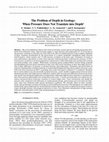
Петрология, 2013
We review published evidence that rocks can develop, sustain and record significant pressure devi... more We review published evidence that rocks can develop, sustain and record significant pressure devi ations from lithostatic values. Spectroscopic studies at room pressure and temperature (P-T) reveal that in situ pressure variations in minerals can reach GPa levels. Rise of confined pressure leads to higher amplitude of these variations documented by the preservation of α quartz incipiently amorphized under pressure (IAUP quartz), which requires over 12 GPa pressure variations at the grain scale. Formation of coesite in rock deformation experiments at lower than expected confined pressures confirmed the presence of GPa level pressure variations at elevated temperatures and pressures within deforming and reacting multi mineral and polycrystalline rock samples. Whiteschists containing garnet porphyroblasts formed during prograde metamorphism that host quartz inclusions in their cores and coesite inclusions in their rims imply preserva tion of large differences in pressure at elevated pressure and temperature. Formation and preservation of coherent cryptoperthite exsolution lamellae in natural alkali feldspar provides direct evidence for grain scale, GPa level stress variations at 680°C at geologic time scales from peak to ambient P T conditions. Similarly, but in a more indirect way, the universally accepted 'pressure-vessel' model to explain preservation of coesite, diamond and other ultra high pressure indicators requires GPa level pressure differences between the inclu sion and the host during decompression at temperatures sufficiently high for these minerals to transform into their lower pressure polymorphs even at laboratory time scales. A variety of mechanisms can explain the for mation and preservation of pressure variations at various length scales. These mechanisms may double the pressure value compared to the lithostatic in compressional settings, and pressures up to two times the litho static value were estimated under special mechanical conditions. We conclude, based on these consider ations, that geodynamic scenarios involving very deep subduction processes with subsequent very rapid exhu mation from a great depth must be viewed with due caution when one seeks to explain the presence of micro scopic ultrahigh pressure mineralogical indicators in rocks. Non lithostatic interpretation of high pressure indicators may potentially resolve long lasting geological conundrums.
Journal of Metamorphic Geology, 1985



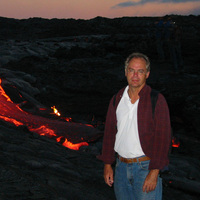





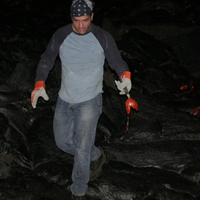

Uploads
Papers by Leonid Aranovich